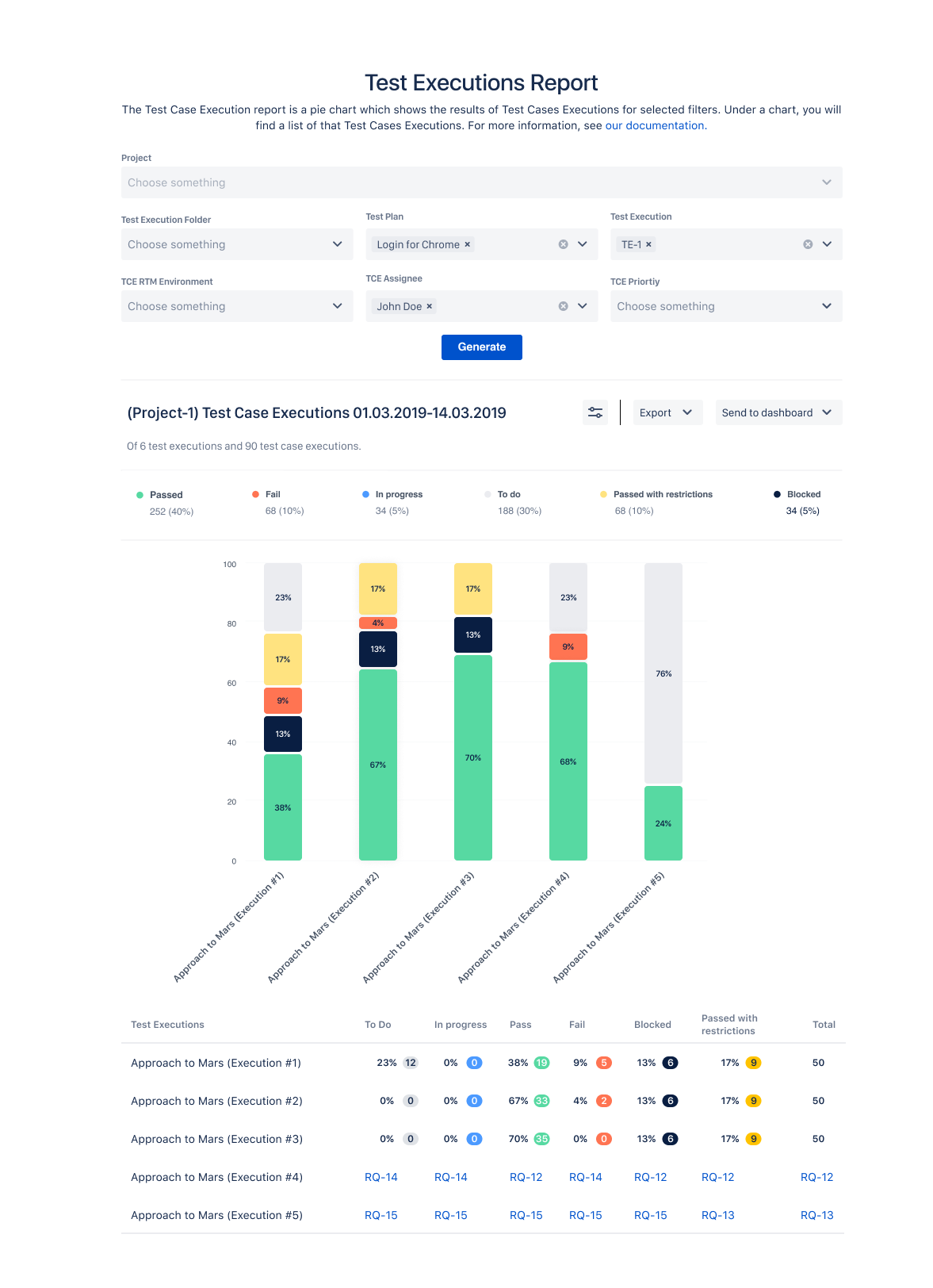
Reporting is not only an important aspect of tests but also regarding the whole teamwork. Testers, developers, product owners – each team member has a manager, who will inevitably ask for the report sooner or later. If not, there are surely stakeholders that at some point will be interested in how things are going so far. It needs to be considered that technicians not necessarily are good at presenting data and it can take longer for them to design a transparent report than to do their actual work. Fortunately, some tools have built-in reports that are created automatically and can help save a lot of time and budget. One of these tools is Atlassian’s Jira.
What is a test report and why do you need efficient reporting?
Reports are crucial when it comes to software testing. People which participate in the process are obligated to report many things: the overall progress of their work, the status of each particular test case or test execution, the number of tasks remained, etc. Managers need to track this kind of information to estimate the costs of specific actions, how many employees should work on a project, and how much time is left to finish it. It makes the collaboration easier, motivates team members, and supports making conclusions. The knowledge from previous reports could be reused in the future.
Defect reporting constitutes the main goal of testing. The clearer the reports, the faster developers can begin to work on fixing bugs. Each software company aims to release fully functional products straight away to see all their benefits right from the start. In order to achieve that after testing inside the company, defects should be well-described and tracked. This is why the consistency from gathering requirements to reporting defects needs to be maintained.
How to create a good test report for any project?
Some universal rules should be taken into the account whilst creating a test report. If you decide to follow these tips you can be sure that the information flow inside your company will improve. What’s more, the additional questions from managers or the other stakeholders will be reduced to the minimum. How should a good report look like?
-
Don’t forget important details. Testers should provide the rest of the team with a detailed description of all their testing activities and steps.
-
Make the report specific. Don’t write a book in your defect or test case description field. Stay focused on the most important facts and summarize test result specifications using short, concrete phrases.
-
Be clear for everyone. Avoid including too much technical information in the report, as it may be not understandable for other team members.
-
Ensure consistency. If it’s possible, create a template for your reports. You will make them easier to read plus you’ll be able to reuse them in your future projects.
What a test summary report should contain?
In order to be complete, a test report should include 4 important factors. All are equally essential and will certainly speed up the transfer of knowledge between the team members at any stage of work on a project or software product.
Project information
Include all information about the project, such as the project name, product general description, project number (if any), assignees, project type (for example testing, fixing, executing, etc.), start/end dates. All this data is needed to familiarize the stakeholders with the initial assumptions, the purpose, estimated due date, and people involved in particular tasks.
Test objective
Be specific about the expected results of each itineration. After reading your test report, any team member should be able to identify which testing type leads to what stage of the process. The graphic below presents the most common testing types:
Source: Guru99
Test summary
This part contains all detailed information about test cases. The necessary data that should be presented in the report includes the number of executed tests in each test plan, the number of passed and failed test cases, the percentage of these statuses, and finally the most important comments from the whole process. The best way of presenting this kind of data is by putting it on a visual graph.
Defects brief description
The main objective of testing is finding defects. This is why a good test report should contain all general information about the bugs. It should be clearly indicated how many bugs were spotted during tests, the status of each bug (if it’s in progress, done, or closed), the percentage of defects of each status, and the priority of tasks. More on the topic you can find on our article about how to describe defects.
Built-in test reports in Jira for manual and automated testing
Jira is the most familiar project management tool amongst successful enterprises. Extended with a dedicated testing tool, such as Requirements and Test Management for Jira (RTM), it offers functionalities that automatically support creating reports with just a few clicks. In our app, the reports are instantly available to all team members. Their transparent, easy on the eye form with graphs and tables makes them easy to read. What’s more, modern testing extensions are designed to meet all kinds of teams, no matter their experience, which is why the shown data is usually very flexible and regulated by filters.
Test Executions report in RTM For Jira
Real-time reporting will surely improve your workflow and communication inside and across the teams. Try our solution yourself and test RTM for Jira for free for 30 days!






